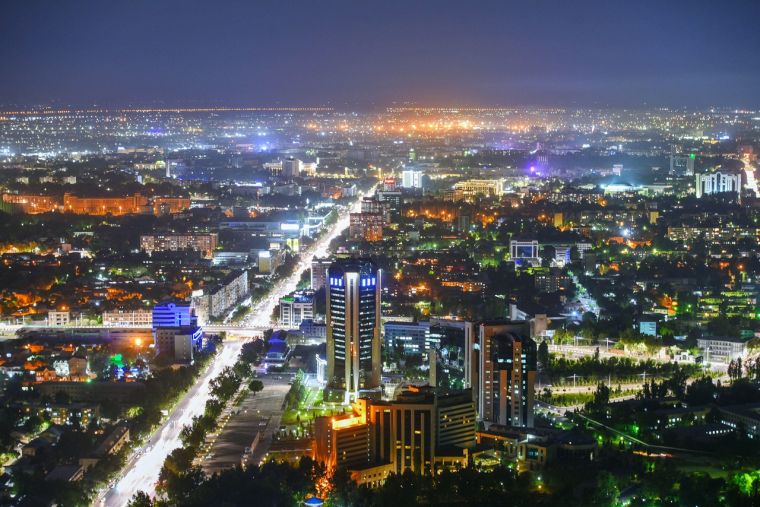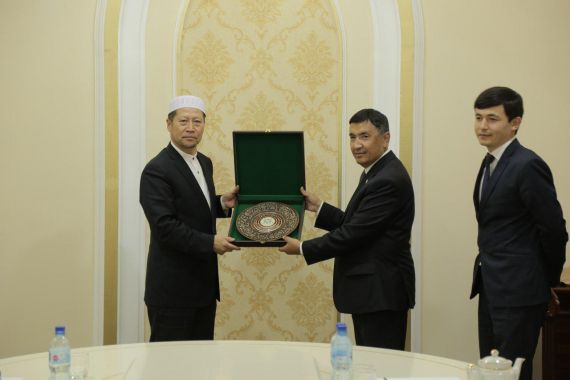Tashkent city



Tashkent - Capital of Uzbekistan General information about Tashkent Tashkent is the capital of Uzbekistan and is a metropolis of over 2.5 million people. The city is set out as a grid of straight, wide streets and avenues, interspersed with many green areas (parks, squares, and gardens) and fountains. This marvelous city embodies the modern elegance of many other capitals of the world; at the same time, as an eastern city, Tashkent has its own unique flavour. It tastefully combines medieval buildings that look like they're from the pages of ancient oriental tales, with elegant European architecture from the time of the Turkestan governorship, concrete 'blocks' from the Soviet era and, finally, sparkling high-rise commercial buildings made of glass and concrete that represent a new era of independent Uzbekistan. Tashkent, Uzbekistan – Picture
Amir Temur Museum More pictures of Tashkent, Uzbekistan History of Tashkent Tashkent is one of the oldest cities on the Great Silk Road between China and Europe. The earliest references to Tashkent as a city settlement appeared in written sources in the 2nd century BC. In the Chinese annals the city is called Yueni or Shi; in the records of the Persian king, Shampur, it appears as Chach; and in other Arabic sources, Shash. The name Tashkent first appeared in Turkish documents of the 9th to 12th centuries. From ancient times, a favourable geographical position and mild climate made Tashkent one of the main Silk Road cities. In the 14-15th centuries it was the part of the Timurid Empire, and in the 16th century it was under the control of the Sheibanids dynasty. In 1865, after the conquest of Mikhail Chernyaev, Russian military leader, the city became under the rule of the Russian Empire and Russian government was established here. In 1930 Tashkent was declared the capital of Uzbekistan, former Uzbek SSR. Tashkent
What to do in Tashkent Tashkent sights Many of Tashkent's tourist sights are concentrated in the Old City, which is one of the few districts that has preserved its traditional culture in the rapidly-changing metropolis. The spirit of old Tashkent lives here, in the cozy courtyards of the hospitable mahallahs, the bustling Chorsu Bazaar, and the blue domes of the Khast Imam complex. In this part of the city there are artisans, teahouses, and bakeries. Other Tashkent sights worth visiting include the Tashkent TV Tower, the German Church, the Polish Church, Amir Temur Square with the famous Tashkent astronomical clock, Independence Square, and the former residence of Prince Romanov, which was designed by architects
Prepeared by Imam Bukhari Tashkent Islamic Institute , Department of languages , English teacher Kadirov Farrukh

On May 12, 2018 Chinese delegation headed by Hasan Yang Fa Ming, Chairman of Islamic Union of China visited Muslim Board of Uzbekistan. The guests were received by Sheikh Abdulaziz Mansur, Deputy Chairman of Muslim Board of Uzbekistan who opened the meeting with introductory speech about positive development in the religious sphere in our country.
In its turn Mr. Hasan Yang Fa Ming noted that there were more than 50 different nationalities living in China, among 30 million Muslims in China there were Uzbek, Uyghur, Huey, Kazak, Tatar, Tajik, Dunsyan, Salar, Boan and other nationalities. Almost half of Chinese live in Sinzhan-Uygur autonomous region. There are 30 thousand mosques and 10 Islamic educational establishments. Chinese government pays equal attention to all religious representations and their activity is coordinated by the Committee for religious affairs. Islamic religious organizations are run by Chinese Islamic Association. This organization has more than 70 employees. Fetwas (religious relics) are based on Hanafi mazkhab with Moturidi creed. 99% of Chinese Muslims follow Hanafi mazkhab. Mr. Hasan Yang also mentioned that Chinese Muslims were pleased to see Uzbek delegation in the International Islamic Symposium held in Urumchi in 2016. The Chairman of Islamic Union of China expressed his gratitude for the warm reception, showed his readiness for partnership and cordially invited Muslim Board of Uzbekistan to visit China.
Nuriymon Abulhasan, Deputy Chairman of the Committee for the Religious Affairs and Firdavs Halilov, Deputy Director of the Center for Islamic Civilization also made informative speeches about the scope of activities carried out in the religious sphere.
The sides exchanged with gifts.
Press Service,
Muslim Board of Uzbekistan.